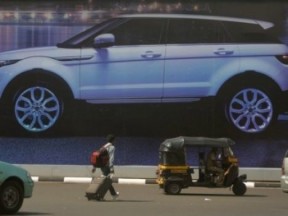If the ruling United Progressive Alliance (UPA) government was still looking for obvious signs of a slowdown, it cannot get find one better than this. India’s new car sales this October fell the most in more than a decade in the face of rising fuel costs, expensive loans, and prolonged inflationary pressures.
Sales of passenger cars were down 23.8 per cent, while production dropped 28.1 per cent when compared to the same period last year, according to the Society of Indian Automobile Manufacturers (SIAM). This is the biggest drop in sales since December 2000, when car sales had fallen close to 40 per cent. Sales fell to 138,521 vehicles in October, down from 181,704 units a year earlier. However, commercial vehicles, including buses, trucks and light commercial vehicles, recorded 19 per cent growth in October to 61,800 from 52,138 sold a year ago, the industry body said recently.
Car sales have been slowing in India for four straight months now. Traditionally, this (the festive season) is the period when car sales usually surge. India’s festive season is seen as a lucky time for big purchases like cars, property and gold. Sales of cars were dragged down in part by labour unrest at leading carmaker Maruti Suzuki India Ltd, the biggest producer in Asia’s third-largest car market. Maruti estimates the stoppages cost the company more than 40,000 units in lost production last month alone. With three strikes crippling production at its Manesar unit since June this year, MSIL has recorded production loss to the tune of 74,500 units. Revenue losses have mounted to Rs 2,200 crore.
The slump report comes shortly after ratings agency Moody’s downgraded India’s banking system citing concerns that the global economic turmoil and a domestic slowdown may trigger more defaults and curb profitability. The reason for economic momentum slowing down was given as high inflation, monetary tightening, and rapidly rising interest rates.
Everything else looks bad, since the market is driven by an swelling aspirational middle class that mostly relies on bank financing for purchases. The Reserve Bank of India (RBI) has raised key lending rates 13 times since March 2010 in a bid to curb inflation, which has been hovering at about 10 per cent for the last one year. Moreover, India’s trade deficit widened to a 17-year high of $19.6bn in October. The gap was accentuated by a fall in export growth, which grew at its lowest rate in more than two years last month, due to worsening economic jitters and slowing demand in the US and Europe, India’s biggest export destinations.
While the situation looks grim for the middle class and far worse for the workling classes, it is ironically the auto industry which is seeking a bailout. Automobile companies want the government to reduce excise duty on large cars to 16 per cent from 22 per cent. The government had reduced the excise duty on small cars from 12 per cent to 8 per cent in 2008 to boost demand in a depressed market. In 2010, after the sector revived, the tax was increased to 10 per cent.
The car sales slump cannot be seen as mere warning signals of an economic downturn. Those, in fact, had come a long time ago. This is evidence that the slump has arrived.
his article was originally written in November for the Deadline Delhi column ion Asian Correspondent. It has been reproduced here with the author’s permission. Subir Ghosh blogs at www.write2kill.in






